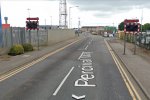Annetts key
Established Member
I could be wrong, but my understanding is that the sign is the command to stop. The lights are a warning. If I'm not mistaken the sign is present all the time, even where there aren't lights and/or barriers.
The Highway Code says:
Link to sourceHighway Code said:Some crossings have flashing red road traffic signals; these mean STOP (and this applies to pedestrians too). A steady amber light shows before the red lights begin to flash, as at ordinary road traffic signals; this means STOP unless it is unsafe to do so.
Some people’s understanding of what things mean may not have been fully correct in the first place. Especially for older drivers who did not have the separate theory test that is now used. If they were never asked the correct questions, they may have passed their test even though they did not have a full understanding of some elements of the Highway Code.
It’s also possible that some peoples memories have changed, and hence don’t give the full correct answer. Especially if poor practice has become normal for them. If poor practice has become normal, its kind of self reinforcing. That’s how I’ve always done it (even though it may not be true) so it must be right.
This is why feedback is important to animals including humans. If there is no feedback, then the learning system no longer works correctly, and poor/bad habits form. Our memories don’t stay the same over time.
Ideally feedback should be positive for good responses as well as negative for continued bad responses. With the emphasis on encouraging the correct response. Which should of course get positive feedback.
If I was to get an old VCR out and put it in front of someone, how many could set the timer to record a TV programme? {Yes, I know there aren’t any analogue TV transmissions in the U.K. anymore, but the VCR does not care about that}.
Similarly, for an old analogue cellphone, how many people could remember how to use one?
Last edited:



